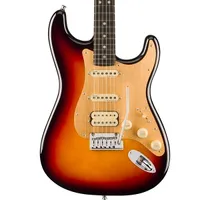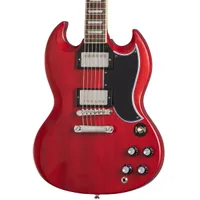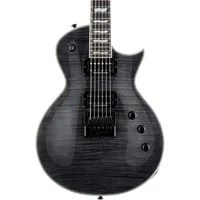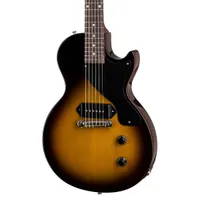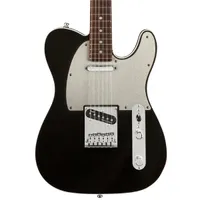Best electric guitars 2025: Our pick of guitars to suit all budgets
Find the top electric guitar for your budget and playing style, whether you play rock, metal, blues or beyond

I'll be totally honest, it’s nigh on impossible to select the best electric guitar. Guitars come in such a variety of styles and configurations that finding a single instrument in such a crowded marketplace is just not possible. So instead of trying to pin down a single instrument as the ‘best’, I’ve opted to separate our top picks into various categories that will suit the needs of a wide variety of players.
Having reviewed countless electric guitars over the last few decades, at MusicRadar, I'm well-placed to pick out the best guitar for a particular job, whether you’re a beginner or a touring professional. I’ve put all of our review guitars through their paces at home and in the rehearsal room to ascertain if they’re up to the rough and tumble of the average musician’s life, and if a guitar doesn’t perform for its intended purpose, it simply doesn’t make the cut.
With so many choices available to guitarists in 2025, it can certainly be a lengthy process to single out a guitar for your needs, so to make things easier for you, I’ve put together a lengthy FAQ section with loads of common questions answered by me and the expert MusicRadar team. If you just want to see the best electric guitars you can buy right now, then keep scrolling for our top picks.
The quick list
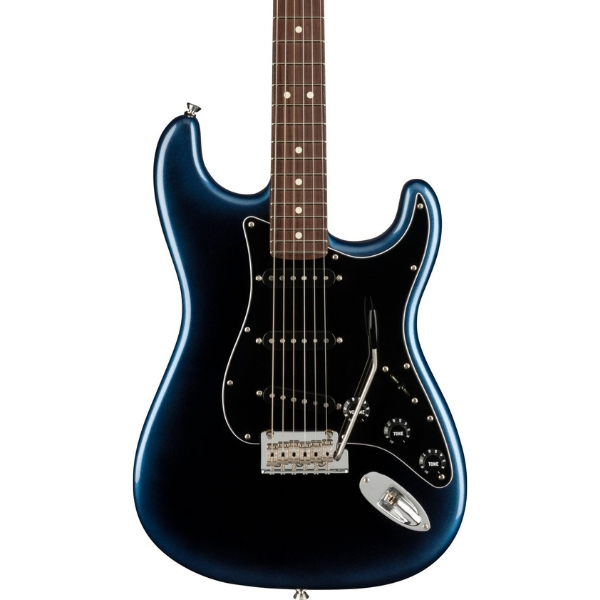
There are loads of different Strat's to pick from, but for us, the Fender American Pro II Stratocaster perfectly straddles the line between tradition and modernity.
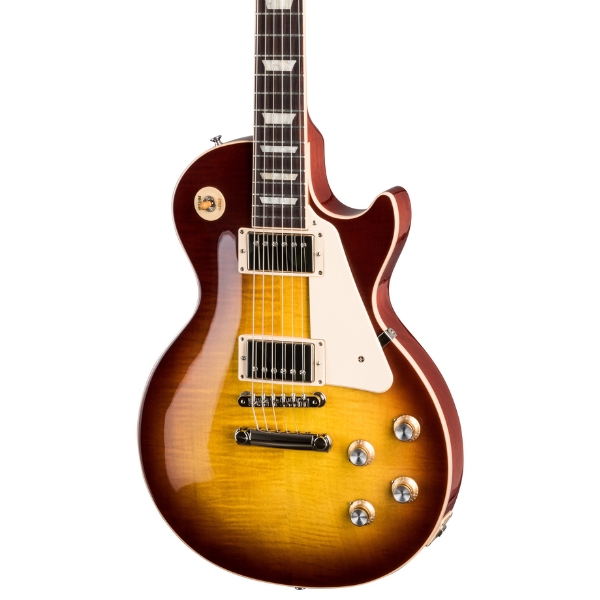
If you're all about the traditional LP experience then the Gibson Les Paul Standard 60s sets the, err, standard. Classic LP tone with modern playability, this guitar is simply joyous to play.
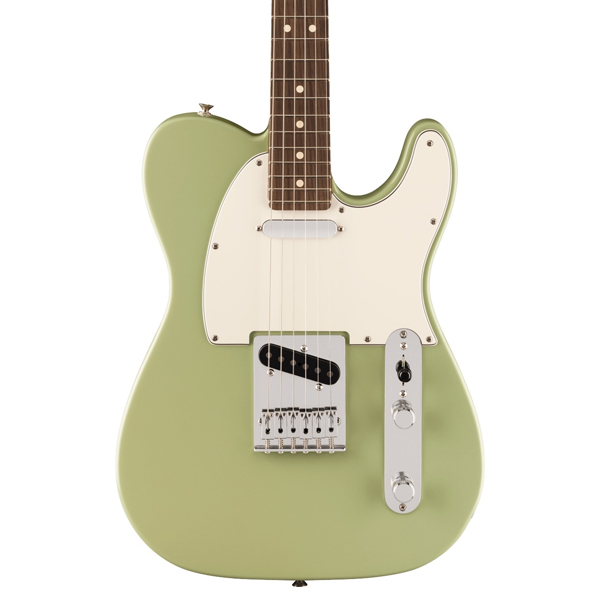
Packed with premium appointments like a rolled fingerboard and rosewood slab boards, yet reasonably priced, the Fender Player II Telecaster can cover a lot of sonic ground.
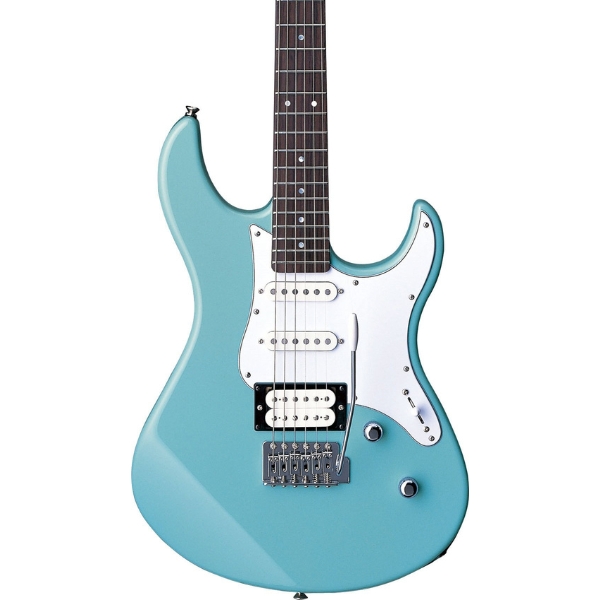
If you're a beginner looking for your first guitar, the Yamaha Pacifica 112V is a fantastic choice. With great pickups and excellent playability, it will last well past those first few chords.
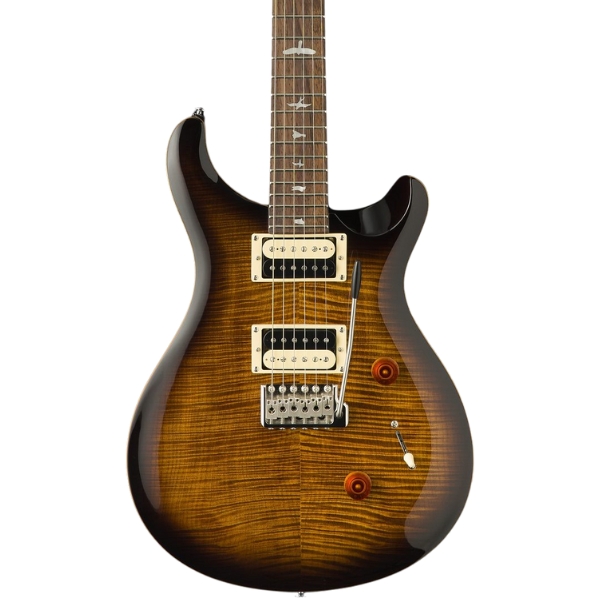
Want to move up from a lower-level instrument? The PRS SE Custom 24 provides loads of pro-level features and exceptional sound at a price that sits well below the $1,000 mark.
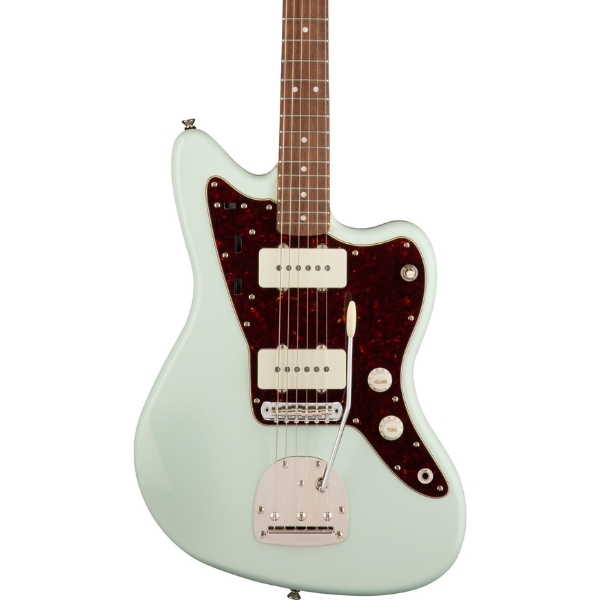
If you're after something different from your usual Stratocaster or Les Paul-style guitars, the Squier Classic Vibe 60s Jazzmaster has a unique voice all of its own.
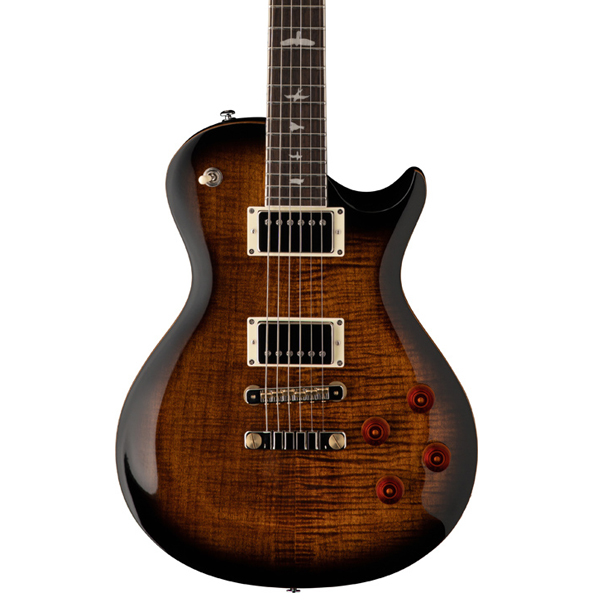
Looking for a top-level, professional electric guitar? The PRS McCarty is a premium offering that delivers versatility, playability, top-tier tone, and stunning good looks.
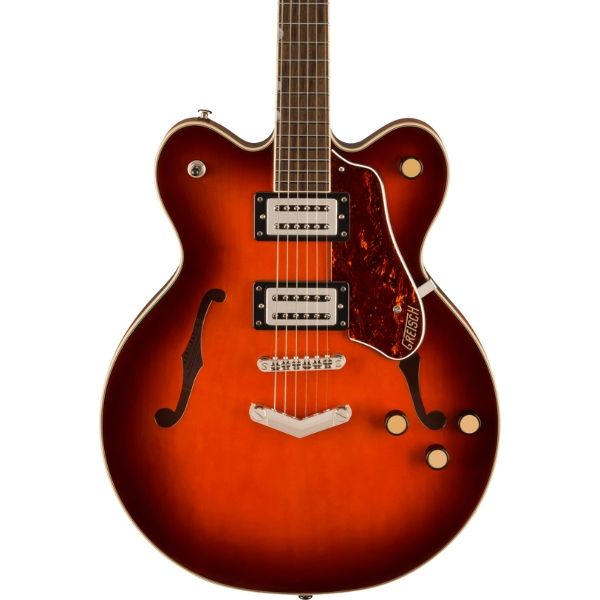
The Gretsch G2622 Streamliner offers that hollow body tone in a smaller and less feedback-prone package. Combining the best of solid and hollow bodies, it's fantastic value for money too.
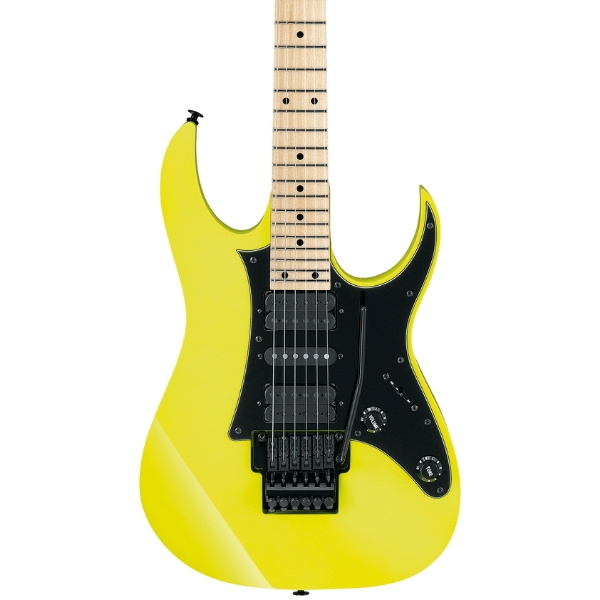
The original super shred machine, the Ibanez RG550 has a ridiculously thin neck for fast playability and two powerful humbuckers for optimal metal guitar tones.
Best overall
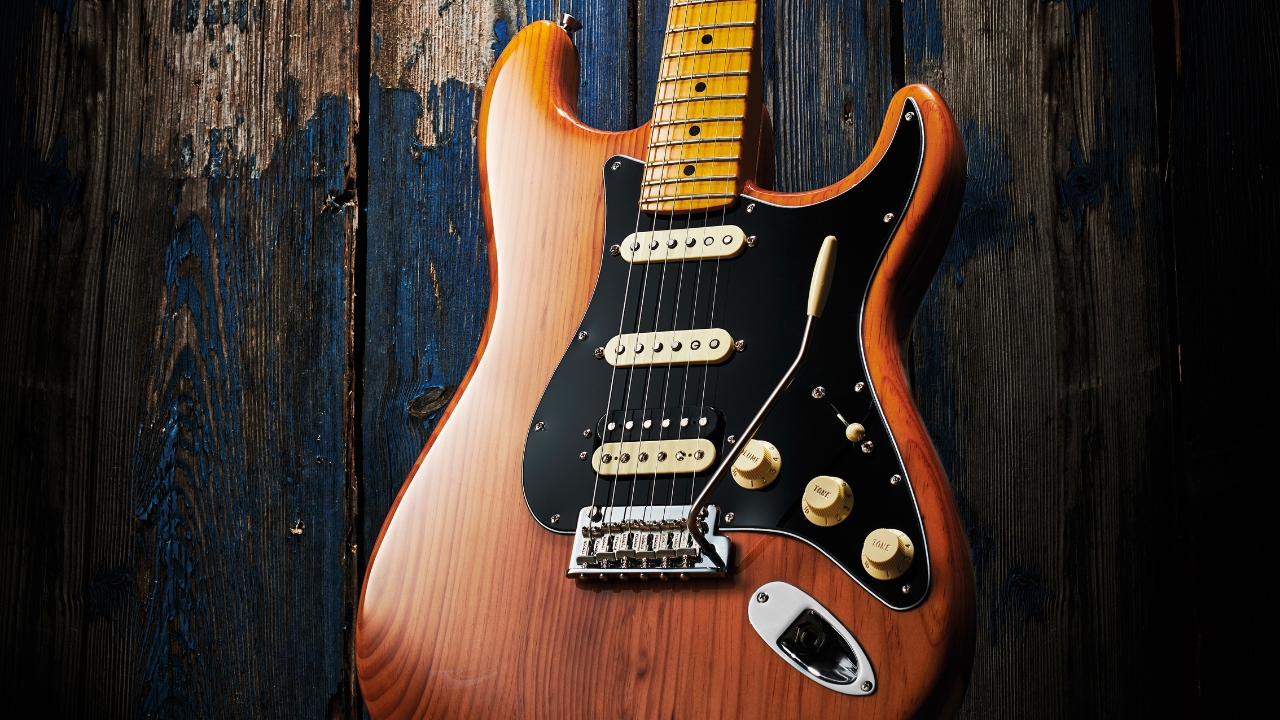
Specifications
Reasons to buy
Reasons to avoid
Build: ★★★★ ½
Playability: ★★★★ ½
Sound: ★★★★ ½
Overall: ★★★★ ½
There are a lot of different options to pick from when it comes to Stratocaster guitars, but for us, the Fender American Professional II Stratocaster is undoubtedly one of the best. It’s got all the aura of an iconic Strat but adds some fantastic player-centric features that make it stand out from the pack.
This guitar will cover a huge amount of sonic ground thanks to the resonant body and trio of pickups. All of those classic Strat tones are available and we particularly loved the neck pickup on this model, which delivers a huge low-end that sounds phenomenal on the lower strings. It's also available in a HSS model if you want some extra oomph.
There’s an onboard treble bleed circuit so you can retain your high end when you roll off the volume knob and a push-push switch that gives you access to the tasty bridge and neck pickup combination. Add in a rolled fingerboard and deep ‘C’ neck profile, and you have an absolute tone monster of a guitar that’s a joy to play.

"The American Professional II Series is reassuringly familiar yet manages to add subtle pockets of innovation and a fresh new look to Fender's flagship US models." Read our full Fender American Professional II Stratocaster review
Best Les Paul

Specifications
Reasons to buy
Reasons to avoid
Build: ★★★★ ½
Playability: ★★★★ ½
Sound: ★★★★ ½
Overall: ★★★★ ½
If you want the traditional LP experience with none of this newfangled weight relief then the Gibson Les Paul Standard 60s is just the ticket. Packed with the mojo of a classic Les Paul, this guitar is a return to form for Gibson after their troubled time messing with their vintage guitars.
The sound of the pickups is absolutely phenomenal, roaring when paired with a tube amp, letting you know just why the LP remains so popular. There’s a lot of variety in the different combinations of pickup and tone pots, and whether you like classic rock, hard rock, or blues, you’ll be able to dial in the perfect sound.
The neck is one of the highlights of the Standard 60s and it comes set up with a nice, low action. The Slim Taper feels relatively flat, with a ‘D’ profile that makes playing feel absolutely rapid. Hand-wired electronics with orange drop capacitors keep things period-correct, and overall it’s just a joy to play.

"You might say it’s fitting that 60 years after producing what many believe to be the definitive electric guitar - the 1959 Les Paul Standard - Gibson, now under new management, has given its USA production range a makeover that is most definitely a return to form." Read our full Gibson Les Paul Standard 60s review
Best Tele
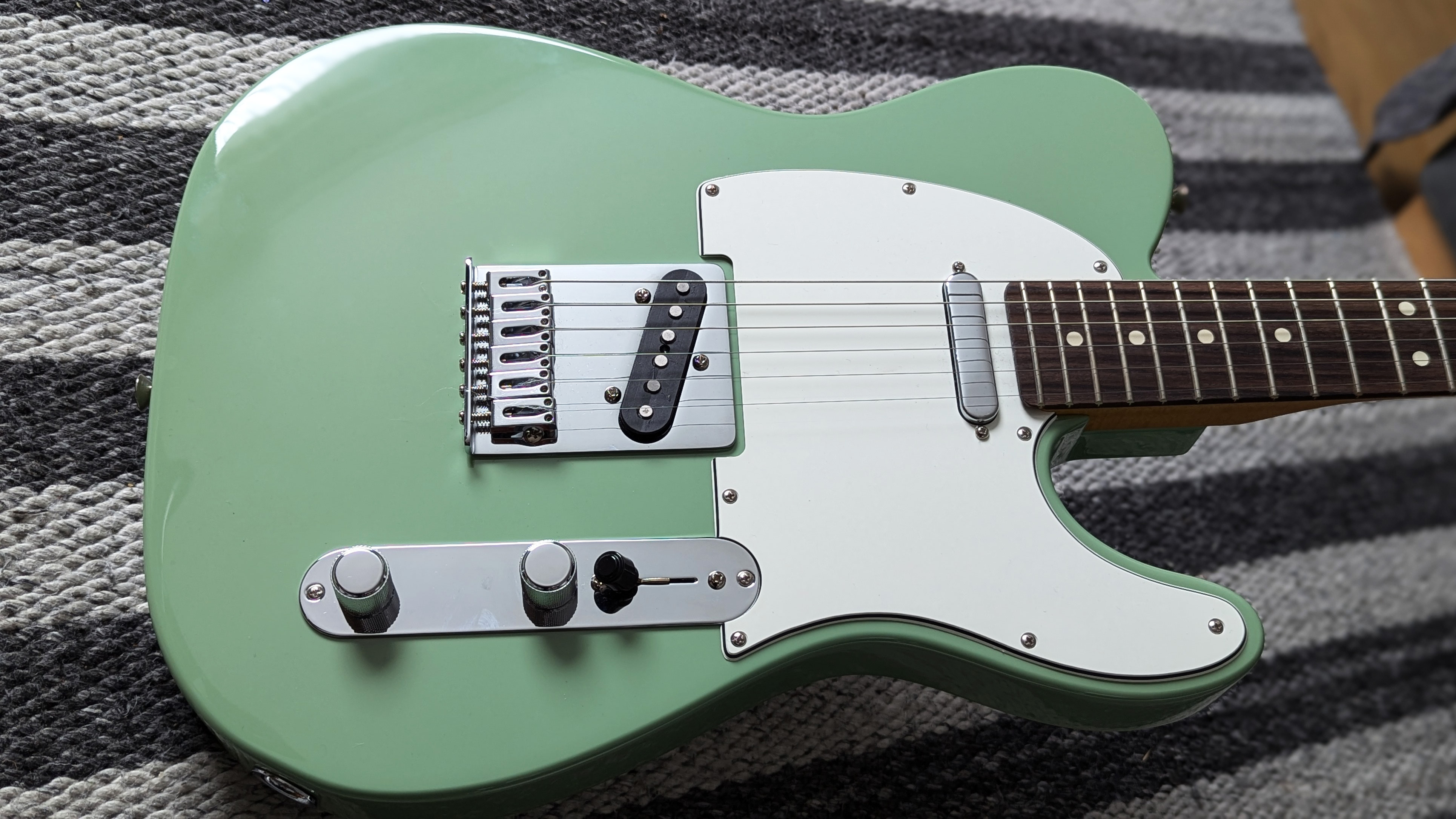
Specifications
Reasons to buy
Reasons to avoid
Build: ★★★★☆
Playability: ★★★★ ½
Sound: ★★★★ ½
Overall: ★★★★ ½
The Fender Player II Telecaster is a fantastic instrument considering the cost, giving you features you’d normally find on instruments much higher up the big F’s ziggurat. Having reviewed both the Tele and Strat variants, we can tell you firsthand that it’s a phenomenal instrument that can cover a lot of ground.
Two of Fender’s Player Series Alnico 5 Single-Coil Tele pickups ensure plenty of output to drive your amp, and this guitar has all of that Tele spank in the bridge position with the thick, dark sound of the neck pickup. In our review, we state that these pickups gave us a "versatile mix of cut and enough low end in the bridge for a lot of rock needs. Those in search of the twangiest steely country thrills might be put out, but this is bright enough for most of us." Continuing, we say of the neck pickup, "The neck has that hollow rounded character I find really appealing with Teles, and this translates to a middle position that’s fantastic for those singer-guitarists out there who are holding down strumming-heavy sets onstage."
The neck feels phenomenal with Fender’s trademark ‘C’ profile and medium jumbo frets occupying a perfect middle ground for pretty much any style - and it’s a joy to play thanks to the rolled edges of the fretboard. The Player II Tele is a brilliant instrument for any kind of guitarist.

"The enhancements to the original Player formula here are subtle in places but significant: the Player II Series feels like the centre of what Fender is and needs to be right now."
Read the full Fender Player II Telecaster review
Best for beginners
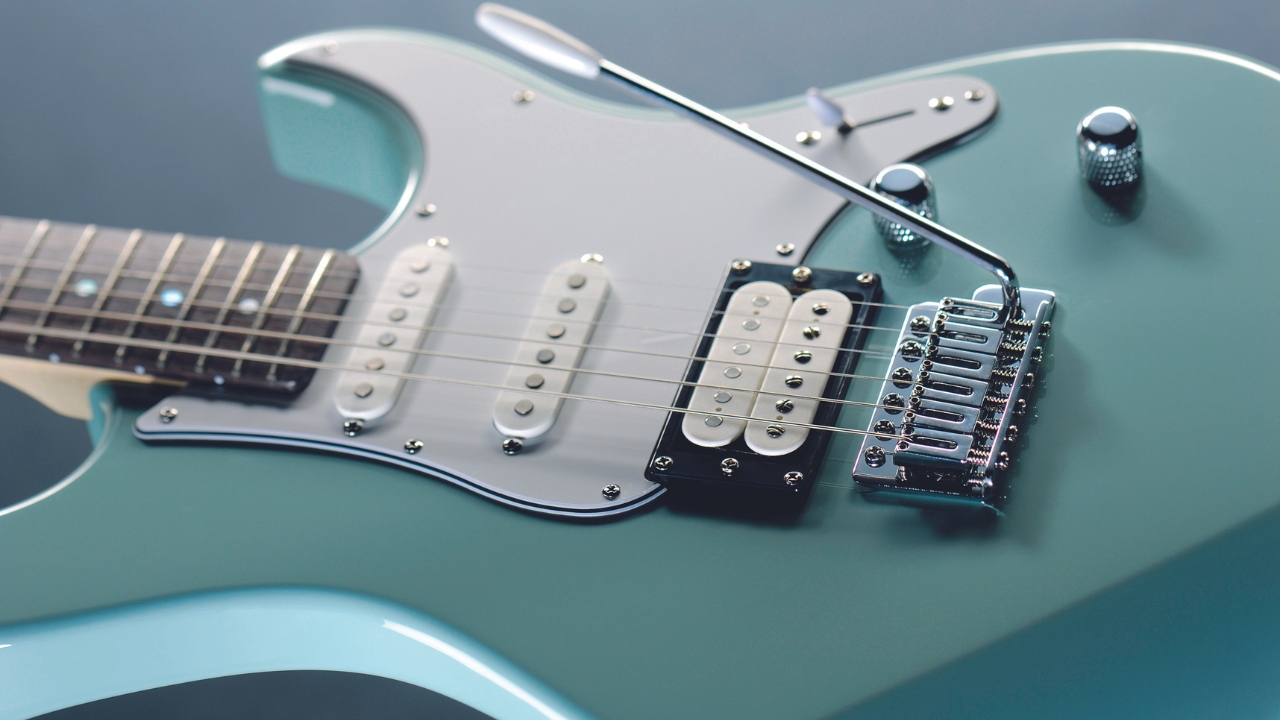
Specifications
Reasons to buy
Reasons to avoid
Build: ★★★★☆
Playability: ★★★★☆
Sound: ★★★★☆
Overall: ★★★★☆
The Yamaha Pacifica has long proved a benchmark for quality and specification, and the 112V remains a top guitar for beginners. The 112 is far from fancy and simply concentrates on the bare necessities. Yet the construction is of excellent quality. Trust us, if looked after this will be a guitar for life.
By design, it's an altogether more modern, brighter, and lighter take on a hot-rod Strat. But when we say brighter that doesn't mean overly shrill. In fact, the bridge humbucker will surprise some, it's beefy without being too mid-range heavy, and although the coil-split proves a little bland played clean, with a distortion boost it's a pretty useful gnarly and wiry rhythm voice.
It's good to have the choice too when mixed with the middle pickup - switching between the full and split coil here is subtle but, especially with cleaner 'class A' amp voicings, there's enough character difference to be useable. The solo single-coils impress - plenty of percussion and with a little mid-range beef added from the amp these get you to the correct Texas toneland. The neck and middle combined produce a fine modern Strat-like mix - the added brightness will cut through a multi-effects patch nicely.

"The Pacifica 112V remains not only the perfect start-up guitar for the serious student but also a solid, reliable choice whatever your age or ability." Read our full Yamaha Pacifica 112V review
Best intermediate
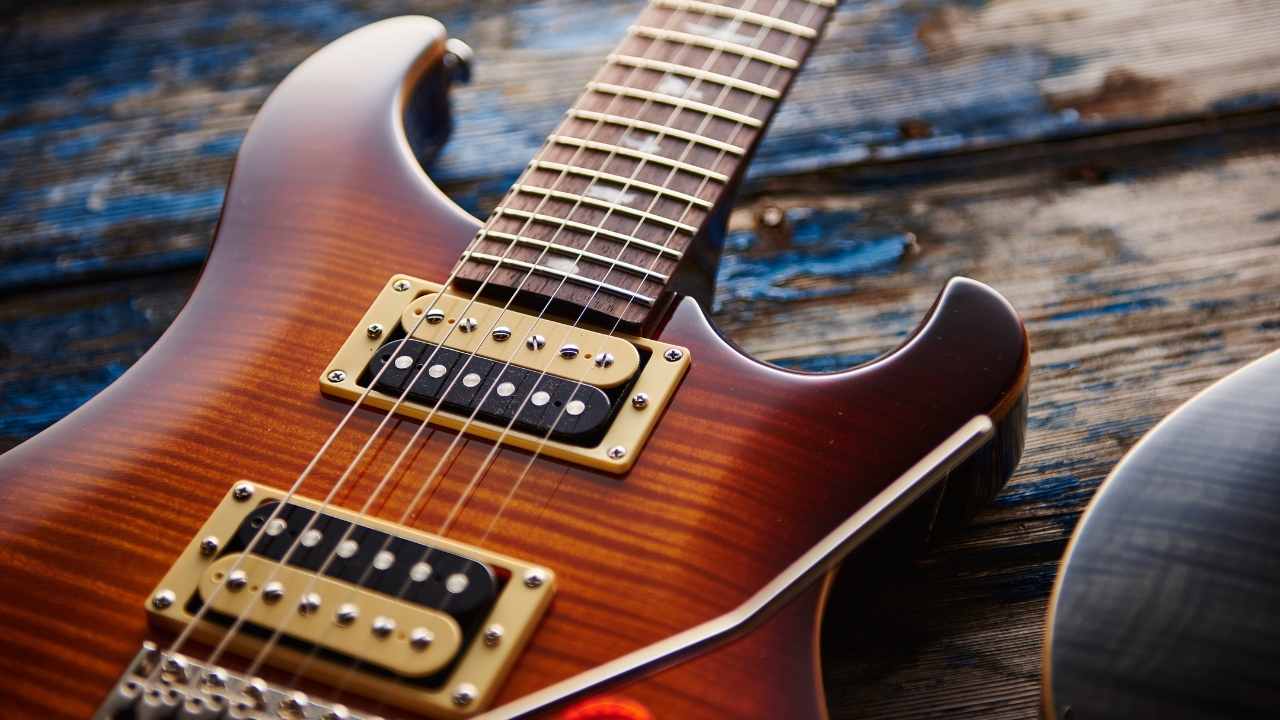
Specifications
Reasons to buy
Reasons to avoid
Build: ★★★★ ½
Playability: ★★★★ ½
Sound: ★★★★☆
Overall: ★★★★ ½
The PRS SE range has offered solid, well-built, great-sounding guitars for years now, and the PRS SE Custom 24 is a perfect example. This Korean-built mass of maple, mahogany and rosewood is a classy-looking guitar. It’s a wonderful instrument to play too - PRS's expertise in making eye-wateringly expensive guitars is evident from the moment you pick it up.
The bridge, for example, has a noticeably low profile. This makes palm-muting a much more pleasant experience, especially if you’re used to chugging away on a Floyd Rose-style bridge.
A lot has been made of the SE Custom’s pickups; 2017 models added Korean-made versions of the 85/15 pups used on the more expensive American Core line, dubbed “the perfect pickup” by Paul Reed Smith himself. Largely, they live up to that promise; the bridge pickup is capable of some serious chunky metal tones, which retain definition and clarity even at absurd levels of gain.
Spend some time with the SE Custom 24 and you’ll come to realise that there is no stereotype that fits. And therein lies its beauty. It’s not a guitar or a brand that concerns itself with cultivating a popular image; PRS has always favoured more obvious metrics like quality manufacturing, great sounds and classic looks.

"The new SE Custom is a case in point: it's a lot of guitar for the player who needs a wide palette of sounds. Also, the Korean versions of the 85/15 pickups nail a more classic humbucking sound compared with the older, mid-focused PRS sounds. Bundle in that superb vibrato, the lively resonance, and easy playability, and it has to be money well spent." Read our full PRS SE Custom 24 review
Best budget

6. Squier Classic Vibe 60s Jazzmaster
Our expert review:
Specifications
Reasons to buy
Reasons to avoid
Build: ★★★★☆
Playability: ★★★★☆
Sound: ★★★★☆
Overall: ★★★★☆
With its combination of fantastic value for money, stunning looks, and unique tone, the Squier Classic Vibe '60s Jazzmaster is easily one of the best cheap electric guitars on the market. Although offsets are primarily used in alternative rock and shoegaze, they’re actually far more versatile than their reputation suggests.
With two Fender-designed single-coil pickups, all that jangly guitar tone the Jazzmaster is renowned for is present here. It’s a characterful sound that’s a little thicker than a Strat or a Tele, whilst retaining more clarity than your average humbucker on an LP. When you use the knobs and switches properly, you can dial in some amazing tones with this guitar.
Of course, the single coils are noisy, and so are the tremolo and bridge combo, but for us, that’s part of the charm of an offset. The movement of strings below the bridge adds to the overall sound, giving this Jazzmaster a totally different feel from any other guitar you’ll play.
Best premium

Specifications
Reasons to buy
Reasons to avoid
Build: ★★★★★
Playability: ★★★★ ½
Sound: ★★★★ ½
Overall: ★★★★ ½
The McCarty Model - named after Theodore 'Ted' McCarty, Gibson's president during its 1950s to 1960s heyday and, much later, 'mentor' to Paul Reed Smith - originally appeared in the early 1990s and was the company's first attempt at a more vintage-informed guitar. It takes its name, primarily, from its scale length of 24.594 inches. However, the focus of the 594 is not just that scale length but a desire to recreate, as closely as possible, the 'holy grail' of vintage Gibson tone - a 1959 Sunburst, but in a modern double-cut guitar.
A change comes, to our ears, with the pickups, which are PRS's latest date-series 58/15 humbuckers but with an 'LT' (Low Turns) suffix, which on a meter shows the bridge unit to have a lower DC resistance than the standard McCarty's 58/15, although the neck pickup seems virtually identical. The four-control layout (the first PRS double-cut guitar to use it) possesses the classic LP setup and feels immediately comfortable to any player used to the much-copied Gibson layout.
Full humbucking, or with the partial coil splits engaged, full volume, half volume, tones rolled off - not to mention the shades with both pickups on - there's not a duff sound that we can find. Dynamic, expressive - it purrs, it roars, it's one of the best high-end electric guitars.

"This is simply one of the most highly-tuned instruments money can buy." Read our full PRS McCarty 594 review
Best for country

Specifications
Reasons to buy
Reasons to avoid
Build: ★★★★☆
Playability: ★★★★☆
Sound: ★★★★☆
Overall: ★★★★☆
The Streamliner concept is simple: to create more affordable Gretsch guitars without losing their specific DNA. Two new Broad'Tron humbuckers are controlled in classic Gretsch style by a three-way toggle selector switch on the bass side shoulder, a master volume on the treble side horn, and then a trio of controls by the treble-side f-hole for individual-pickup volume and master tone.
The G2622's construction gives a different response and resonance to other new releases from Gretsch and, with these pickups, moves further from the Gretsch sound. And while its construction gives it a more solid, or at least ES-335, character, it's a little more airy and less punchy with a softer, squashier tonality.
The beefier pickups certainly don't nail a classic Gretsch tonality - although if that's what you want, the full-size pickups are easy to replace - but they do broaden the sonic potential, especially for more gained styles, while staying close to the classic iconography. If you want a great-value semi-hollow guitar, this is among the best for under $500.

"The G2622 might well be the bargain 'ES-335' we've all been waiting for." Read our full Gretsch G2622 Streamliner review
Best for shred
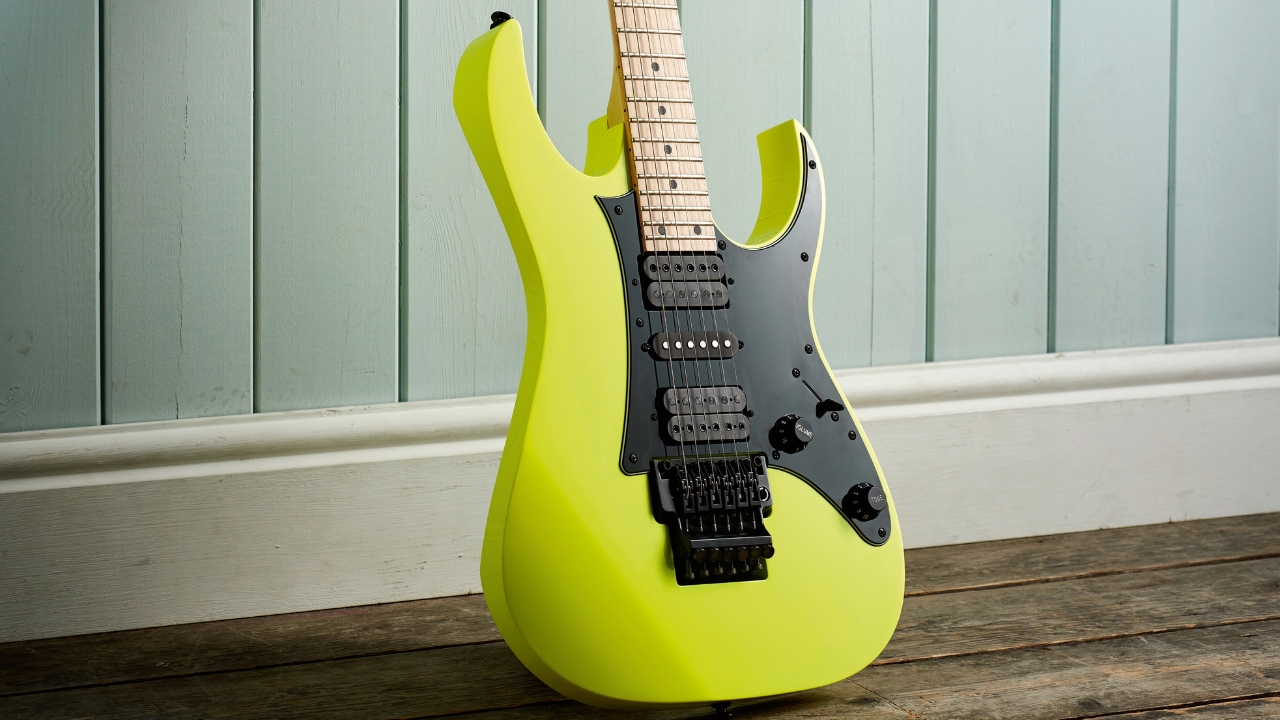
Specifications
Reasons to buy
Reasons to avoid
Build: ★★★★☆
Playability: ★★★★½
Sound: ★★★★☆
Overall: ★★★★☆
Introduced in 1987 and discontinued in 1994, the Ibanez RG550 remains the childhood sweetheart of many players. Designed as a mass-appeal version of Steve Vai’s famous JEM777 model, it had character in abundance. For this reboot, Ibanez has skilfully managed to extract the very essence of what was so popular about the original RG550 and piece it back together in a way that enhances its legacy.
The Japanese-made 2018 vintage is, essentially, a masterclass in everything that is good about shred and metal guitars. The neck feels lithe - our hand glided pretty effortlessly, rather than simply moving - while the Edge vibrato is rock-solid and the overall craftsmanship is exemplary. Tonally, the RG550 covers a lot of bases. It always did, despite its pointy appearance, meaning you could comfortably stray into all kinds of genres without too much fuss.
The US-designed V7 bridge humbucker delivers the razor-sharp riff platform you’d hope it would, while the V8 neck ’pup offers a hint of compression at higher gain settings, which levels lead lines nicely. It is, in the best way possible, everything you remembered from the original, and that makes it one of the best shred guitars available today.

"The entire SuperStrat niche of guitars owes the RG550 a huge debt of gratitude. With this reissue, Ibanez is casually reminding everyone who’s boss." Read our full Ibanez RG550 review
Also tested
For us, the above guitars are what you should be going for depending on your use case. That said, if you didn't find what you were looking for, we've reviewed plenty more great guitars, a selection of which you can find here.
Fender American Ultra II Stratocaster HSS | Solid alder body | Maple neck | Ebony fretboard | Haymaker Humbucker / Ultra II Noiseless Hot Strat single-coil pickups
With its flattering playability, faultless build and cornucopia of tones, the American Ultra II Stratocaster HSS is a master of all trades. Fender should be bolder with the finish options when completing the trilogy, but this a pro-quality tool for hard-working musicians who like their guitar to do the heavy lifting.
MusicRadar Score: 4.5/5
Read our full Fender American Ultra II Stratocaster HSS review
Harley Benton Fusion-II HH FR Roasted FNT | Sapele body | Maple neck | Flamed maple fretboard | Roswell pickups
Roasted maple neck, stainless steel frets… Floyd Rose 1000?! We wouldn't expect to see this combination of features on a guitar under £1,000, but here they are. And the end result dazzles in the playability and build stakes for such a reasonable price point.
MusicRadar Score: 5/5
Read our full Harley Benton Fusion-II HH FR Roasted FNT review
Epiphone 1961 Les Paul SG Standard | Mahogany body | Mahogany neck | Laurel fretboard | Gibson Burstbucker pickups
Working with Gibson's custom shop for this model, the level of finishing is phenomenal. We must say, we absolutely loved the mid-range focus of this guitar's sound, with none of the 'honk' some humbucker-equipped guitars suffer from.
MusicRadar Score: 4.5/5
Read our full Epiphone 1961 Les Paul SG Standard review
LTD EC-1000 EverTune | Mahogany body | Mahogany neck | Ebony fretboard | EMG/Seymour Duncan pickups
The EC-1000ET is an all-mahogany single-cut loaded with a set of EMG 81 and 60 active humbuckers, a comfortably modern neck, and a high level of construction quality. Its key selling point, however, is a fitted EverTune bridge - which keeps tuning solid.
MusicRadar Score: 4.5/5
Read our full LTD EC-1000 EverTune review
Gibson Les Paul Junior | Mahogany body | Mahogany neck | Rosewood fretboard | Dog-Ear P90 pickup
It doesn't get much simpler than this - a slab of mahogany with a solitary P-90 pickup drilled directly into the top. It may be basic, but man, does it sound good! This no-nonsense guitar quickly became a firm favorite of many rock and punk players.
MusicRadar Score: 5/5
Read our full Gibson Les Paul Junior review
Fender American Ultra Telecaster | Alder/Ash body | Maple neck | Maple/Rosewood fretboard | Ultra Noiseless Vintage Tele pickups
Fender's Ultra series arrived in 2019 as a follow-up to its acclaimed Elite models and again successfully balanced innovation with tradition for timeless guitar designs. A sculpted body, powerful electronics, and locking tuners make this a forward-thinking, modern workhorse.
MusicRadar Score: 4.5/5
Read our full Fender American Ultra Telecaster review
How to choose

Selecting the perfect electric guitar can be an exciting yet daunting task. Here are some key factors to consider during your search.
Tonewoods: The type of wood used in the construction of a guitar significantly impacts its weight, shape, and overall sound. While opinions may vary, many believe that denser woods provide better sustain. For instance, mahogany, which is frequently used by Gibson, tends to create a warm and rich tone with strong low and mid-range frequencies. On the other hand, Fender commonly opts for alder, known for its balanced frequency response, or ash, which lends a brighter sound. Basswood is another popular choice for budget guitars; it’s lightweight and readily available, delivering a balanced, transparent tone that shouldn’t be overlooked.
Pickups: The pickups are crucial in defining your guitar's sound, alongside your playing style. Essentially, pickups are magnets wrapped in wire that convert string vibrations into an electrical signal sent to your amplifier. There’s a variety of pickup types, but the most common are single-coils and humbuckers. Single-coil pickups, commonly found in Fender models like the Strat and Tele, produce a bright, clear tone with a subtle midrange scoop. Strat pickups are often described as ‘glassy’ or ‘chimey,’ while Telecasters are recognized for their signature ‘twang.’
Conversely, humbuckers offer a fuller, warmer sound that tends to occupy more sonic space in a mix and usually has a higher output than single-coils, leading to earlier distortion. If you currently play a guitar with single-coils, seeking out one with humbuckers (or the other way around) can broaden your tonal range. Many guitars, like the HSS Strat, feature a combination of both pickup types, providing versatility. Additionally, coil-tapped or coil-split humbuckers can mimic the sound of single-coils when activated.
Hardware: The hardware on an electric guitar plays a significant role in maintaining tuning stability and enhancing tone and durability. As you invest more, you’ll notice improvements in components like high-quality tuners (sometimes locking tuners), sturdier fittings for better sustain, and more reliable electronics that ensure a clearer signal.
Neck Profile: The neck profile is another important consideration and will vary across different models. Personal preference largely dictates what feels best for you, with profiles ranging from ultra-thin, to thicker, vintage-inspired designs. Typically, players who favour speed and technical playing prefer thinner necks, while those who play blues or classic rock might opt for a thicker neck or something in between.
While technical details are essential, trusting your instincts during your search can lead to delightful surprises. You might find yourself drawn to a guitar you didn’t initially consider but that feels just right when you play it. Keeping an open mind can be rewarding.
Glossary of terms
Body: The main part of the guitar that contributes to its overall sound and tone. It can be solid, semi-hollow, or hollow, and comes in various shapes and sizes.
Bridge: A component that holds the strings in place and transfers their vibrations to the guitar body. It can affect sustain, tuning stability, and overall tone.
Fretboard: The front part of the neck where the frets are embedded. It is where the player presses the strings to create different notes.
Frets: Metal strips embedded along the fretboard that divide the neck into half steps, allowing players to accurately produce different pitches by pressing down on the strings.
Headstock: The top part of the guitar neck that holds the tuners (or machine heads) for adjusting the tension of the strings.
Neck: The long, thin part of the guitar that connects the body to the headstock. It is where the fretboard, frets, and inlays are located.
Pickups: Electromagnetic devices located on the guitar body that capture the vibrations of the strings and convert them into an electrical signal, which can then be amplified.
Strings: Thin wires made of various materials that are strummed or plucked to produce sound. Each string is tuned to a specific pitch.
Tuning Pegs (or Tuners): Mechanical devices on the headstock that adjust the tension of each string, allowing for fine tuning of the guitar.
Tone Control: A knob that adjusts the treble and bass frequencies of the guitar’s sound, shaping the overall tone.
Volume Control: A knob that regulates the output level of the guitar signal, allowing the player to increase or decrease the loudness.
Saddle: Part of the bridge where the strings rest. It helps in determining string action and intonation.
Scale Length: The distance between the nut (the top of the fretboard) and the saddle. This measurement affects the guitar's sound, playability, and string tension.
FAQs
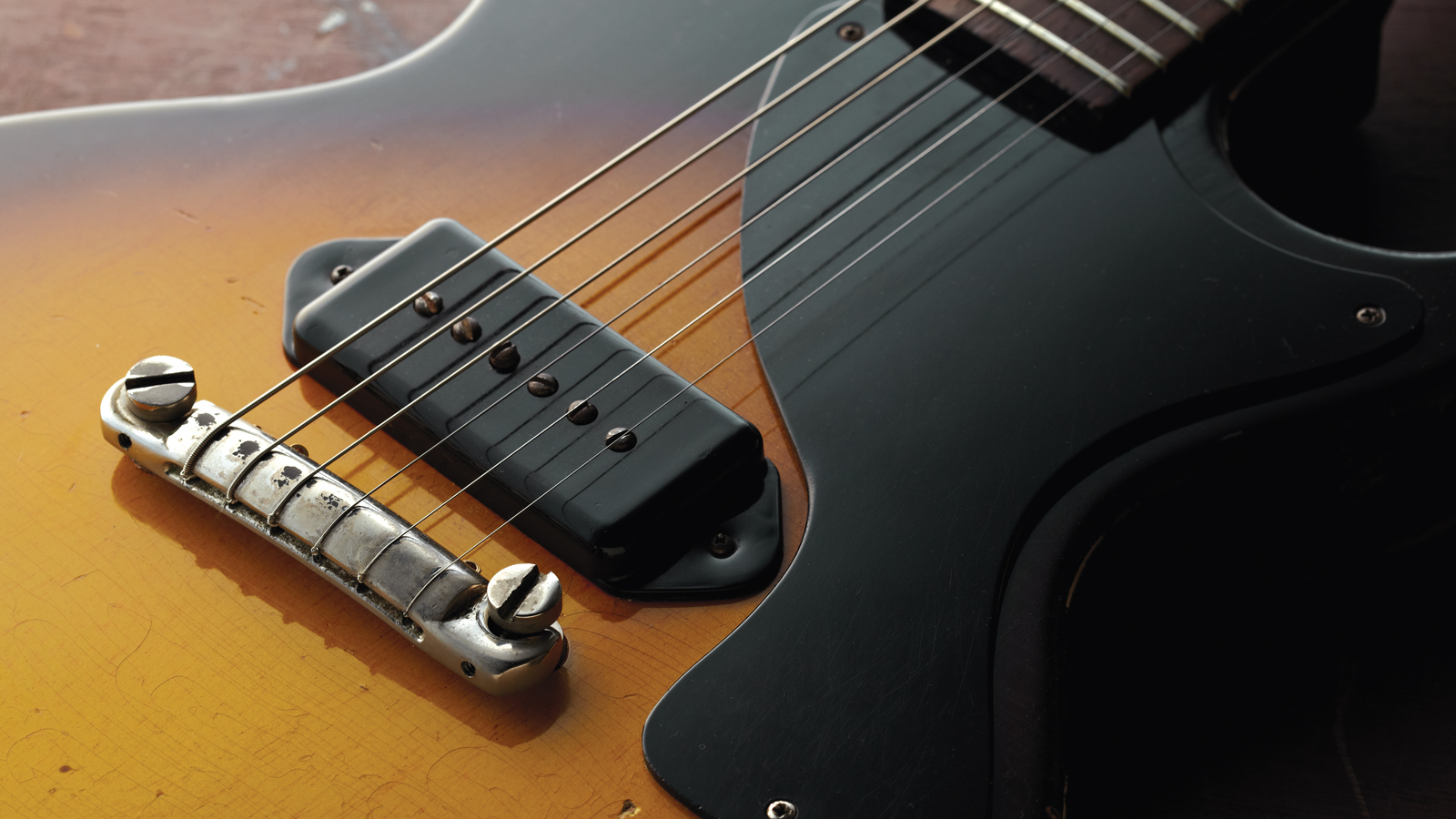
When was the electric guitar invented?
Like all great inventions, the electric guitar was born from a desire to fix a problem - that problem being the lack of volume from an acoustic guitar. Although the timeline is a little murky, most historians agree that the first-ever electric guitar made its debut in the hands of Charlie Christian in 1936. The prominent jazz musician needed his acoustic guitar to be louder so his guitar solos could be heard over the band. He would go on to add what we now think of as a pickup to the body of his guitar, and voila - the electric guitar was born.
What about the solid-body electric guitar? Well, there are many different accounts out there about who invented the first-ever solid-body electric guitar. Was it Rickenbacker's Frying Pan lap steel or Les Paul’s log? The truth is, no one really knows who came up with the concept, but what we can all agree on is the first mass-produced electric guitar - as we know it today - was the Fender Esquire and Broadcaster in 1950.
What’s quite remarkable is, the Broadcaster hasn’t changed that much since it was released at the start of the fifties. Okay, it did get a rebrand in 1952, after Gretsch pointed out they had a drum kit by the same name. However, the basics that made the guitar so revolutionary are still present today. Of course, this goes for all the guitars of America’s golden age; the Stratocaster, Jazzmaster, and ES-335 are all practically unchanged 70 years on.
Do electric guitar body shapes matter?
Whilst the electric guitar's body shape has little effect on the sound of the instrument, it certainly plays a part in the way it feels. There are two main types of guitar body shapes, single cut and double cut. A single cut is what you get with a Telecaster or a Les Paul, whilst a double cut is your typical Stratocaster or SG-style guitar.
A modern guitar body will typically have 'cuts' that make it more comfortable, usually on the back of the body, the so-called 'belly cut' or 'rib cut' and one when your arm rests, which allows for a more comfortable position when picking.
Vintage guitars on the other hand usually eschew these for period correctness, resulting in a guitar with sharper edges. If comfort is at the forefront of your list for a new guitar, then definitely bear this in mind when you purchase.
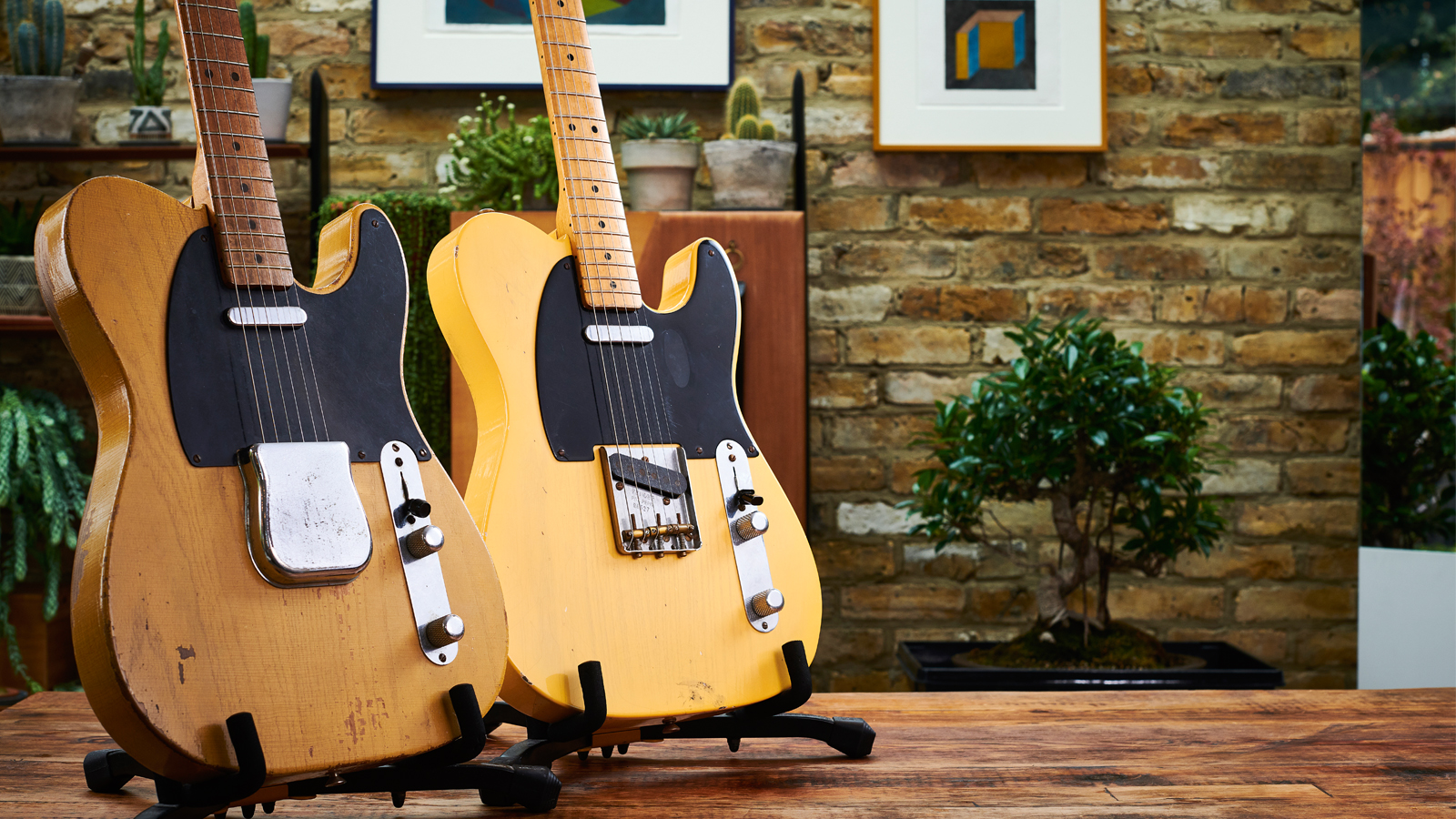
What do I need to know about guitar hardware?
The hardware on an electric guitar is more important than some players think, and it pays to ensure your new guitar has the best hardware you can afford. When we talk about hardware, we, of course, are referring to the bridge, machine heads, nut, and strap buttons
While at the beginner end of the spectrum, the hardware is serviceable and works perfectly fine for the most part. The more we increase the budget, the better the quality gets. For example, you may find a basic set of machine heads on an entry-level guitar. Whereas, on a high-end instrument, you are likely to find a set of locking machine heads that have a higher gear ratio and aid in string slippage, ultimately resulting in more stable tuning.
How do electric guitar pickups work?
Electric guitar pickups are the main tonal generators of the electric guitar and come in many different shapes and sizes. The two most common are the single coil and humbucker. Single coil pickups are generally brighter, more dynamic, and perfect for clean sounds - although if you asked Hendrix, he would’ve told you they can rock as well.
There is a downside to the humble single coil, though, and that’s noise. Single coils suffer from a problem called 60-cycle hum, and it can be rather irritating, especially at high volumes or excess gain.
Humbuckers, on the other hand, as the name suggests, buck the hum, eradicating the issue. However, in doing so, it does change the tonal characteristics of the pickup. Humbuckers tend to be fuller, warmer, and more aggressive sounding - perfect for blues, rock, and metal. We've got a great article on single coils vs humbuckers if you want to learn more about the different styles.
What are neck profiles on a guitar?
There are a few other things to consider when choosing the best electric guitar. For example, it’s worth paying close attention to the neck profile. At the end of the day, your new guitar needs to be comfortable and appropriate for the style of music you wish to play. There’s a reason many shredders gravitate towards the thin flat profile of an Ibanez, as it forces your hand to sit at the perfect angle for lightning-fast legato lines.
On the other hand, some players love the fuller feel of a 50s-style “baseball bat” neck, as they prefer to tightly grip the guitar and dig in. Like most things on the guitar, it’s a personal preference. So experiment with different types. We've got a great guide on guitar neck profiles if you want to learn more about them.
It’s also worth considering the scale length of your new guitar. Generally speaking, the shorter the scale length, the slinkier feeling the guitar. Drop tunings benefit from a longer scale length, as the increased distance between the bridge and the nut results in increased tension.

How much should I spend on an electric guitar?
So how much can you expect to pay for one of the best electric guitars? Well, it really depends on the level of the guitar you’re looking for and your current ability.
Usually, with guitars - or any instrument for that matter - the more you spend, the more you get. This is because premium instruments are lovingly handmade using the best materials by masters of the craft. This usually results in a better playing and sounding guitar - although this comes at a price. So we would say if you’re looking for a pro-level guitar, then you’ll want to spend $/£1,500+.
Now, spending that level of cash as a beginner simply isn’t worth it. If you are just starting out, you can pick up a fantastic instrument for as little as $/£150, which is more than serviceable. Once you reach the intermediate stage, you’ll want to advance to a higher quality guitar, and anything from $/£500 upwards will make an excellent upgrade.
Should I buy a guitar online?
There was a time when buying a guitar online was considered by many as a risky practice, but that's certainly not the case anymore.
Yes, while it's preferable to try a guitar out at a local guitar store before making a purchase, it's not always practical. Sometimes certain brands aren't available in your local store, so you may not have the time to actually go shopping, or as a beginner, you could just be nervous about playing in the shop - well, buying online might be for you.
Online music instrument retailers like Thomann, Guitar Center, Musician's Friend, and Sweetwater offer hassle-free returns as standard, so you can purchase a guitar, play it in the privacy of your own home and send it back if it's not right. Most offer between 30-45 days to return an item, as long as it's in original condition.
How do I care for my electric guitar?
It’s essential to regularly restring your new guitar. Not only will this ensure it sounds its best, but it will also prolong the life of the frets. Before you use any cleaning solutions, it’s worth checking what type of finish you have on your guitar. It’s safe to use most types of guitar polishes on polyurethane finishes - although it’s worth checking with the manufacturer beforehand.
For nitrocellulose - found on Gibson and PRS guitars - you need to be far more careful which polish you use as you can damage the lacquer. Therefore it’s crucial to check that the polish you are using is nitro-friendly. With nitrocellulose, you also have to be careful which guitar stand you use, as it can react with certain rubber and foam materials.
How we test
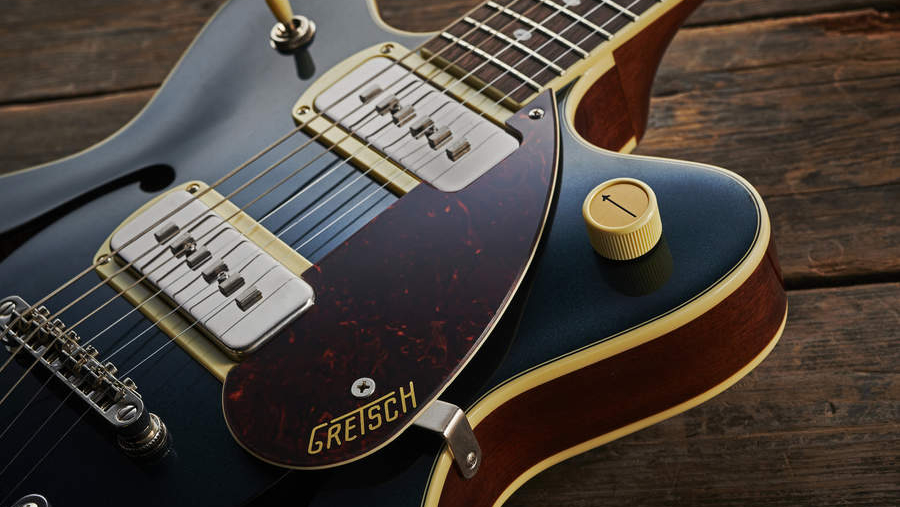
As electric guitars are very subjective instruments, we must put our personal preferences aside in order to test them fully. Any electric guitar we get our hands on, whether it costs $100 or $10,000, must meet a certain set of criteria before we recommend it to you.
When we receive a new electric guitar, the first thing we do is check the build quality of the instrument. We check every area of the guitar, making sure that it feels strong, sturdy and well put together. If the guitar has a bolt-on neck - such as a Stratocaster or Telecaster - we’ll take some time to make sure that this joint is tight and that everything fits as it should.
We also look over the hardware of the guitar - most notably the tuners, electronics and bridge. This is to make sure that the tuners move smoothly, and that they offer a suitable amount of resistance. We’ll check the volume and tone pots to make sure they move as they should, and we’ll check the bridge and saddles to make sure there are no flaws, sharp edges or fitment issues. If the guitar has a tremolo, we’ll check that the action of the tremolo isn’t too soft or too difficult to use, too. At this point, we’ll also look over the finish of the guitar and make sure there are no flaws, and that the finish of the guitar suits the price point of which it sits at.
We’ll then put the guitar through its paces with a playing test. For this test, we’re looking specifically at how the guitar plays straight out of the box - as this is the most common playing experience that someone who buys a guitar online would have. We’re checking to see how comfortable the neck is in our hand, but also how well the neck and frets are finished. We’re looking out for sharp fret ends and any frets that are taller than the others, but also looking for any intonation issues or truss rod issues. Does the guitar need another setup, or is it playing the best it can already?
Finally, we test to see how the guitar sounds. This is, again, pretty subjective, but usually a manufacturer will design a guitar to have a specific sound and purpose. We check to see not only whether the guitar lives up to the manufacturer’s intentions, but also whether it has any other tricks up its sleeve. We’ll always test an instrument to its strengths first of all, but we like to test them in a range of musical scenarios and styles to see what they can do.
Read more about how we test music-making gear and services at MusicRadar.
Why you can trust us

✔️More than 9,500 reviews on-site
✔️Over 17 years of product testing
✔️ 2.9 million monthly users globally
With more than 17 years of experience, MusicRadar is the premier music-making website in the world. Run by musicians for musicians, we offer expertly written gear round-ups and high-quality, authoritative reviews by an extensive team of highly experienced industry professionals.
We also interview world-renowned musicians and stars about their creative processes and the nuts and bolts of their gear and technique. This gives fans an insight into the actual craft of music-making that no other music website can.
But that's not all. We also provide excellent tuition, from bite-sized tips to advanced techniques and guidance from recognised musicians.
As well as delivering high quality written reviews and features, we also produce a wealth of video content on YouTube. MusicRadarTV is where you'll find all of our access-all-areas interviews, hot gear demos and exclusive video lessons.
Below you'll find more information on the authors of this guide.
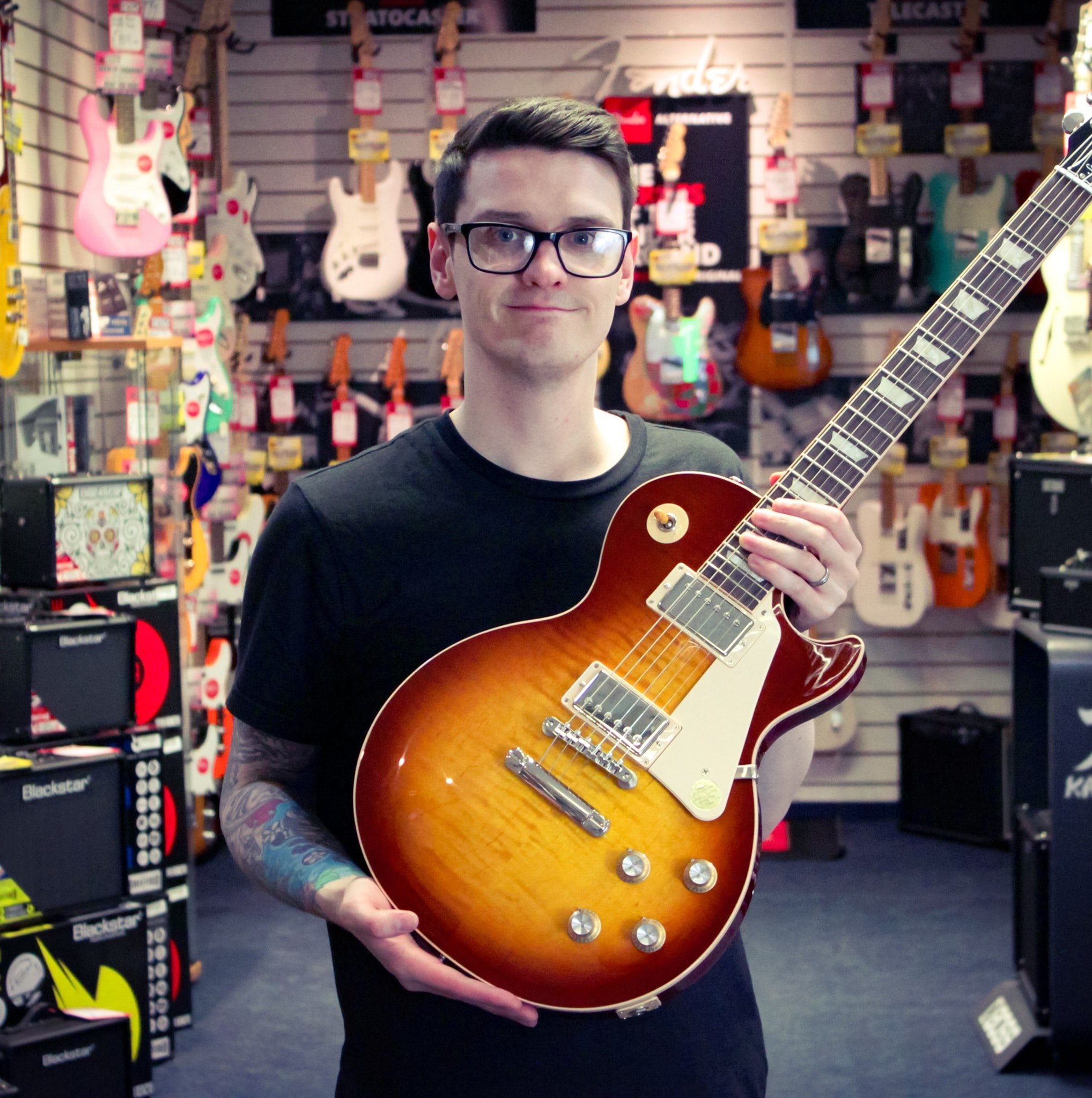
I'm MusicRadar's Senior Deals Writer. In this role, I create and maintain the 200+ buyer's guides you'll find on the site, find the best deals on guitar products for our readers, and test the latest gear. My reviews have been featured in prominent publications including Total Guitar, Future Music magazine and Guitar World.
Throughout my career, I have been fortunate enough to speak with many of my musical heroes, having interviewed notable artists such as Slash, members of The Offspring, Foo Fighters, Coheed and Cambria, Sum 41, Thrice, and others.
Prior to joining the MusicRadar team, I worked in music retail. For just under a decade, I advised everyone from absolute beginners to seasoned pros on the ultimate gear for their needs, from beginner acoustic guitars to top-end modellers.

Matt is a Junior Deals Writer here at MusicRadar. He regularly tests and reviews music gear with a focus on audio interfaces, studio headphones, studio monitors, and pretty much anything else home recording-related. Responsible for over 60 buying guides, a large part of his role is helping musicians find the best deals on gear. Matt worked in music retail for 5 years at Dawsons Music and Northwest Guitars and has written for various music sites including Guitar World, Guitar Player, Guitar.com, Ultimate Guitar, and Thomann’s t.blog.
A regularly gigging guitarist with over 20 years of experience playing live and producing bands, he's performed everything from jazz to djent, gigging all over the UK in more dingy venues than you can shake a drop-tuned guitar at. When he's not holed up in his home studio recording new songs or downloading new plugins, you’ll find him making a racket with Northern noise hounds JACKALS.
Related buying guides
MusicRadar's got your back
Want all the hottest music and gear news, reviews, deals, features and more, direct to your inbox? Sign up here.
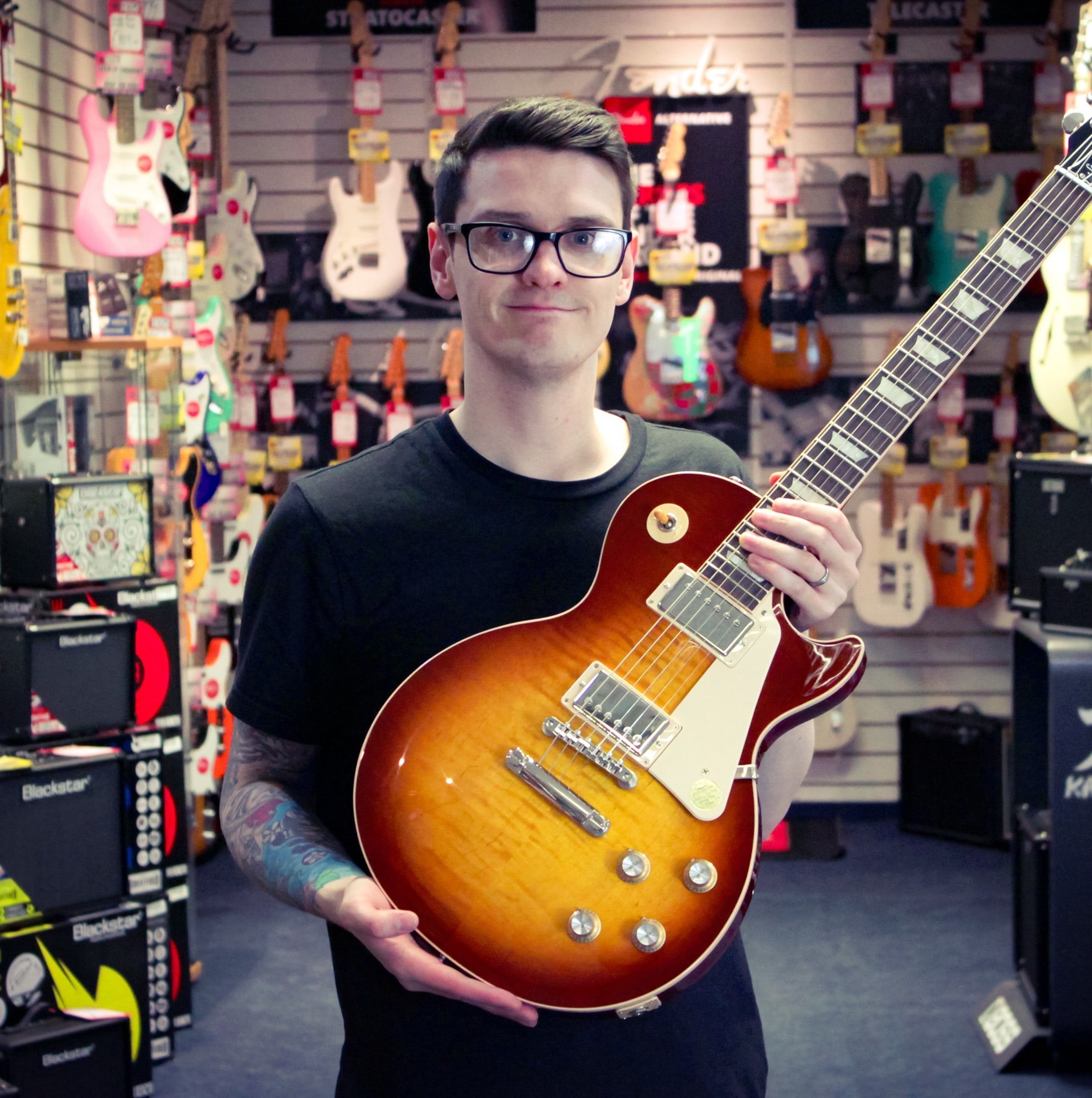
I'm a Senior Deals Writer at MusicRadar, and I'm responsible for writing and maintaining buyer's guides on the site. As part of my role, I also scour the internet for the best deals I can find on gear and get hands-on with the products for reviews. My gear reviews have been published in prominent publications, including Total Guitar, Guitarist, and Future Music, as well as Guitar World.com. I've also had the privilege of interviewing everyone from Slash to Yungblud, as well as members of Sum 41, Foo Fighters, The Offspring, and many more.
In a previous life, I worked in music retail, selling everything from digital pianos to electric guitars. I'm also a fully qualified sound engineer who holds a first-class Bachelor's degree in Creative Sound Production from the University of Abertay.
- Matt McCrackenJunior Deals Writer
